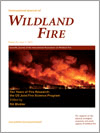
INTERNATIONAL JOURNAL OF WILDLAND FIRE
Scope & Guideline
Pioneering Research for Fire-Prone Landscapes
Introduction
Aims and Scopes
- Wildland Fire Behavior and Dynamics:
Research focusing on the mechanisms of fire spread, intensity, and behavior in different ecosystems, including modeling approaches and empirical studies. - Fire Management and Policy:
Studies that examine strategies, policies, and practices for effective fire management, including Indigenous practices, prescribed burns, and risk mitigation. - Ecological Effects of Fire:
Investigations into the ecological consequences of wildfires, including impacts on biodiversity, soil health, and vegetation recovery. - Technological Innovations in Fire Monitoring:
Utilization of remote sensing, UAVs, and modeling technologies to enhance fire prediction, monitoring, and management. - Climate Change and Fire Regimes:
Research that explores the relationships between climate variables, fire frequency, and intensity, and how these dynamics are shifting with global climate change. - Community and Societal Responses to Fire:
Studies examining the social dimensions of fire management, including community preparedness, risk perception, and public health issues related to smoke exposure.
Trending and Emerging
- Integration of Indigenous Fire Management Practices:
There is a growing emphasis on the importance of Indigenous fire management practices, highlighting their efficacy and historical significance in maintaining ecosystem health and reducing fire risks. - Climate Change Impacts on Fire Regimes:
Research increasingly focuses on how climate change is altering fire regimes, including frequency, intensity, and seasonality, emphasizing the need for adaptive management strategies. - Technological Advances in Fire Monitoring and Prediction:
Emerging research is leveraging advanced technologies such as machine learning, remote sensing, and UAVs to improve fire monitoring, prediction, and management effectiveness. - Post-Fire Ecosystem Recovery and Resilience:
Studies are increasingly exploring the recovery processes of ecosystems following wildfires, focusing on resilience and the role of various factors such as soil health and species interactions. - Public Health and Smoke Exposure Research:
An emerging area of focus is the impact of wildfire smoke on public health, addressing the need for better communication and management strategies to protect communities. - Fire Behavior in Urban Interfaces:
Research is trending towards understanding fire dynamics in wildland-urban interfaces, reflecting the growing risks associated with urban development in fire-prone areas.
Declining or Waning
- Traditional Fire Suppression Techniques:
There has been a noticeable decrease in research focused solely on traditional fire suppression methods, as the field shifts towards more integrated and adaptive management strategies. - Generalized Fire Risk Assessment Models:
Research that applies overly simplistic or generalized models for fire risk assessment is waning in favor of more nuanced, data-driven approaches that account for local conditions and variability. - Historical Fire Records without Contextual Analysis:
While historical fire records remain important, there is a decline in studies that do not incorporate ecological or socio-economic contexts, as researchers seek to link past events with contemporary management challenges. - Overemphasis on Fire as a Catastrophic Event:
There is a decreasing trend in studies that treat fire predominantly as a negative phenomenon, with a shift towards recognizing its ecological role and benefits in certain ecosystems.
Similar Journals

SILVA FENNICA
Exploring New Horizons in Forest Ecology and ManagementSILVA FENNICA, publishing since 1976, is a premier open-access journal dedicated to the advancement of knowledge in the fields of Forestry and Ecological Modeling. Released under the stewardship of the Finnish Society of Forest Science in collaboration with the Natural Resources Institute Finland, this journal serves as a vital resource for researchers, professionals, and students alike, fostering the exchange of innovative ideas and research findings. With an impressive impact factor placed in the Q1 category for Forestry and holding a commendable Q3 position in Ecological Modeling as of 2023, SILVA FENNICA illustrates its significance by ranking 47th in Forestry and 19th in Ecological Modeling according to Scopus metrics, reflecting a robust peer recognition and dissemination of scholarly work. The journal offers open access to all published articles since 1998, ensuring wide visibility and accessibility of research outputs. Located in Finland, SILVA FENNICA invites contributions that address sustainable forestry practices, forest ecology, and ecological modeling with a commitment to promoting scientific discussion and environmental stewardship.

Lesnoy Zhurnal-Forestry Journal
Fostering Collaboration in Forestry Research and PracticeLesnoy Zhurnal-Forestry Journal is a prominent academic publication dedicated to advancing the field of forestry and environmental sciences. Published by the Northern Arctic Federal University M. V. Lomonosov, this journal focuses on innovative research, practices, and policies related to forestry management and conservation. With an Open Access model established since 2015, the journal ensures widespread dissemination of knowledge and foster collaborative research across global scholarly communities. Located in Arkhangelsk, Russia, the Lesnoy Zhurnal appeals to researchers, professionals, and students alike, providing a platform for sharing valuable insights and addressing emerging challenges in forestry. Though specific metrics like HIndex and Scopus rankings are presently unlisted, the journal is committed to excellence and aims to enhance its visibility and impact within the scientific community. This publication is not only a critical resource for ongoing research but a key player in shaping sustainable forestry practices in a rapidly changing environment, making it indispensable for anyone involved in forestry and environmental studies.
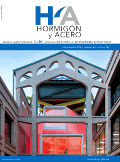
Hormigon y Acero
Advancing the Future of Structural EngineeringHormigon y Acero, an esteemed journal published by the ASOC ESPANOLA INGENIERIA ESTRUCTURAL-ACHE, serves as a vital resource in the fields of structural engineering and construction. With an ISSN of 0439-5689 and an E-ISSN of 2605-1729, this journal plays a critical role in disseminating innovative research and advancements from 2019 to 2024, particularly focusing on concrete and steel applications. Although it does not currently offer open access, its contributions remain invaluable to professionals and academics seeking to enhance their understanding and practices in engineering disciplines. Ranked within the 13th percentile in Building and Construction and the 9th percentile in Civil and Structural Engineering according to Scopus, Hormigon y Acero is recognized for its rigorous peer-reviewed content that addresses contemporary challenges and innovations within the industry. The journal is positioned in Madrid, Spain, and aims to foster collaboration and knowledge exchange among researchers, practitioners, and students dedicated to the advancement of structural engineering.
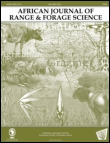
AFRICAN JOURNAL OF RANGE & FORAGE SCIENCE
Advancing Knowledge in Animal Science and EcologyAFRICAN JOURNAL OF RANGE & FORAGE SCIENCE is a premier scholarly publication dedicated to the fields of animal science, zoology, and ecology, published by TAYLOR & FRANCIS LTD. With a notable impact factor and categorized in the Q2 quartile for both Animal Science and Ecology, this journal is essential for disseminating cutting-edge research that addresses the complexities of forage management and its ecological implications across the African continent. Established in 1993 and continuing to engage with the latest advancements through to 2024, it serves as a vital platform for researchers, practitioners, and students to share innovative findings and practical applications. The journal not only fosters collaboration among scientists but also emphasizes the importance of sustainable practices in range management, providing insights that have broader implications for environmental conservation. Although it is not currently open access, the journal remains a respected entity in academic circles, with Scopus rankings reflecting its significant contribution to the scientific community. Readers are encouraged to explore its rich repository of research to inform and inspire future studies in these crucial areas.

Fire-Switzerland
Empowering global discourse on fire safety and environmental science.Fire-Switzerland is a renowned, peer-reviewed academic journal published by MDPI, focusing on critical issues intersecting the fields of fire safety, environmental science, and forestry. Launched in 2018, this Open Access journal provides a platform for innovative research and practical solutions that address the complexities of fire in various ecosystems and urban environments. With an impressive standing, it has achieved notable quartile rankings, including Q1 in Forestry and Q2 in multiple categories such as Building and Construction, Earth and Planetary Sciences, and Safety Research as of 2023. Geographically rooted in Switzerland, Fire-Switzerland aims to foster international discourse and collaboration among researchers, professionals, and policymakers dedicated to enhancing fire management and safety practices. By making its content freely accessible to a broader audience, the journal plays a pivotal role in advancing knowledge and promoting awareness of fire-related challenges and innovations globally.

Advanced Industrial and Engineering Polymer Research
Driving Excellence in Chemical EngineeringAdvanced Industrial and Engineering Polymer Research (ISSN: 2542-5048), published by KEAI PUBLISHING LTD, stands as a pivotal Open Access journal dedicated to the cutting-edge advancements within the fields of materials science and polymer engineering. Established in 2018, this journal aims to foster innovation and disseminate high-quality research that spans the realms of chemical engineering, industrial and manufacturing processes, and polymer applications. With impressive category quartile rankings in Q1 across various disciplines—including Chemical Engineering, Industrial and Manufacturing Engineering, and Materials Science—this journal represents a significant resource for researchers, industry professionals, and students alike. Offering access from its headquarters in Beijing, China, and embracing a commitment to open access since its inception, Advanced Industrial and Engineering Polymer Research ensures that groundbreaking findings are readily available, facilitating collaboration and enhancing knowledge in the global scientific community.
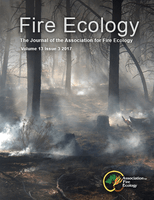
Fire Ecology
Connecting Communities: Open Access for Global Fire ResearchFire Ecology is a leading open access journal published by Springer, dedicated to advancing the understanding of fire's roles in the environment. With its ISSN 1933-9747, the journal has been a significant resource for researchers and practitioners since its establishment, gaining a robust reputation in the field. Fire Ecology stands out with its impressive impact factor and quarter one rankings in key categories, demonstrating its high quality and influence in Ecology, Evolution, Behavior and Systematics, Environmental Science, and Forestry. The journal not only publishes ground-breaking research on fire ecology but also serves as a platform for innovative studies examining the ecological, social, and management aspects of fire. As an open access journal since 2005, it ensures that vital knowledge is accessible to a global audience, supporting the ongoing dialogue necessary for understanding and managing fire in diverse ecosystems. Located in New York, USA, its commitment to excellence is further evidenced by its high rankings in Scopus, placing it among the top tier of journals in its field. Researchers, professionals, and students are encouraged to contribute and explore the latest findings that shape our understanding of fire and its ecological implications.

INTERNATIONAL POLYMER PROCESSING
Advancing Polymer Knowledge for a Sustainable FutureINTERNATIONAL POLYMER PROCESSING, published by WALTER DE GRUYTER GMBH, serves as a crucial platform for professionals and researchers in the fields of Chemical Engineering, Industrial and Manufacturing Engineering, and Materials Science, particularly focusing on polymers and plastics. With its ISSN 0930-777X and E-ISSN 2195-8602, this journal has been in circulation since 1988 and continues to expand its contributions to contemporary research trends through to 2024. Ranking in the third quartile across multiple categories, including Chemical Engineering (miscellaneous) and Materials Chemistry, it offers insightful and rigorous peer-reviewed articles that enhance the understanding of polymer processing technologies and innovations. This journal is vital for anyone engaged in polymer science and engineering, providing both theoretical and practical perspectives that advance the field. Although it does not provide open access, the journal's content is indispensable for academia and industry professionals looking to stay at the forefront of polymer research.
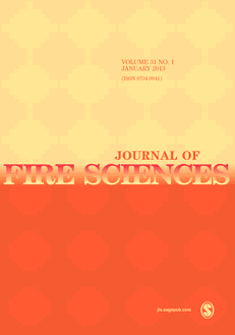
JOURNAL OF FIRE SCIENCES
Innovating solutions for a safer tomorrow.The JOURNAL OF FIRE SCIENCES, published by SAGE PUBLICATIONS LTD, is a leading scholarly platform that has been advancing the understanding of fire dynamics, safety measures, and material behaviors since its inception in 1983. With an impact factor that reflects its rigorous peer-review standards and significant contributions to the fields of Mechanical Engineering, Mechanics of Materials, and Safety, Risk, Reliability, and Quality, this journal is rated Q2 in its respective categories as of 2023. Researchers and professionals will find valuable insights that span theoretical frameworks and practical applications, encouraging the development of innovative fire safety solutions. With its commitment to disseminating high-quality, impactful research, the JOURNAL OF FIRE SCIENCES stands as an essential resource for those dedicated to enhancing fire safety and risk management practices worldwide. For more information about submission guidelines and access options, please visit the journal's official page.

Journal of Coatings Technology and Research
Shaping the Future of Surfaces and InterfacesThe Journal of Coatings Technology and Research, published by Springer, stands as a vital resource for researchers and professionals in the fields of materials science and chemistry. With an ISSN of 1547-0091 and an E-ISSN of 1935-3804, this journal is recognized for its significant contributions to the study of coatings technology, encompassing diverse aspects from surfaces and interfaces to colloids and surface chemistry. Currently holding a 2023 Impact Factor that places it in the Q2 and Q3 quartiles across several categories—including Chemistry and Colloid and Surface Chemistry—the journal serves as an essential platform for disseminating innovative research. Its accessibility options cater to a broad audience, ensuring that both established scholars and emerging researchers can engage with the latest findings. Since its inception in 2004, the journal has continued to foster advancements in coatings technologies, promoting sustainable practices and novel applications across industries.